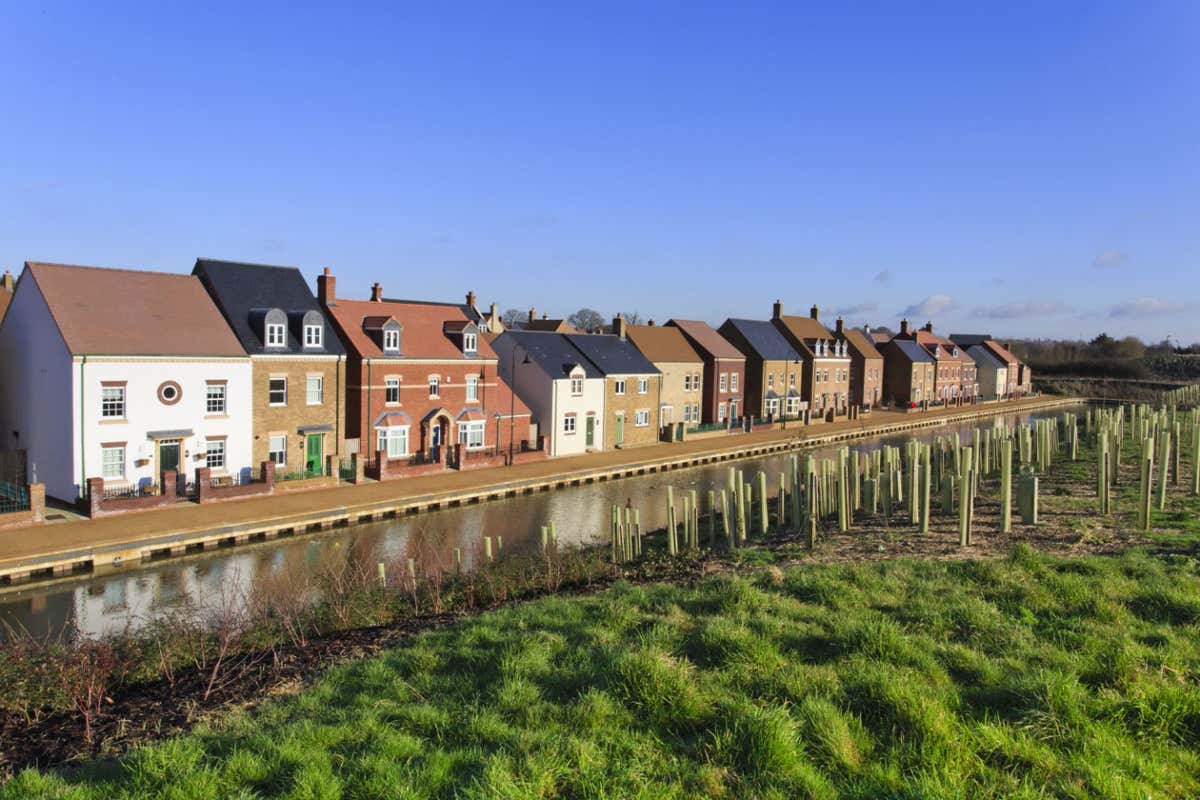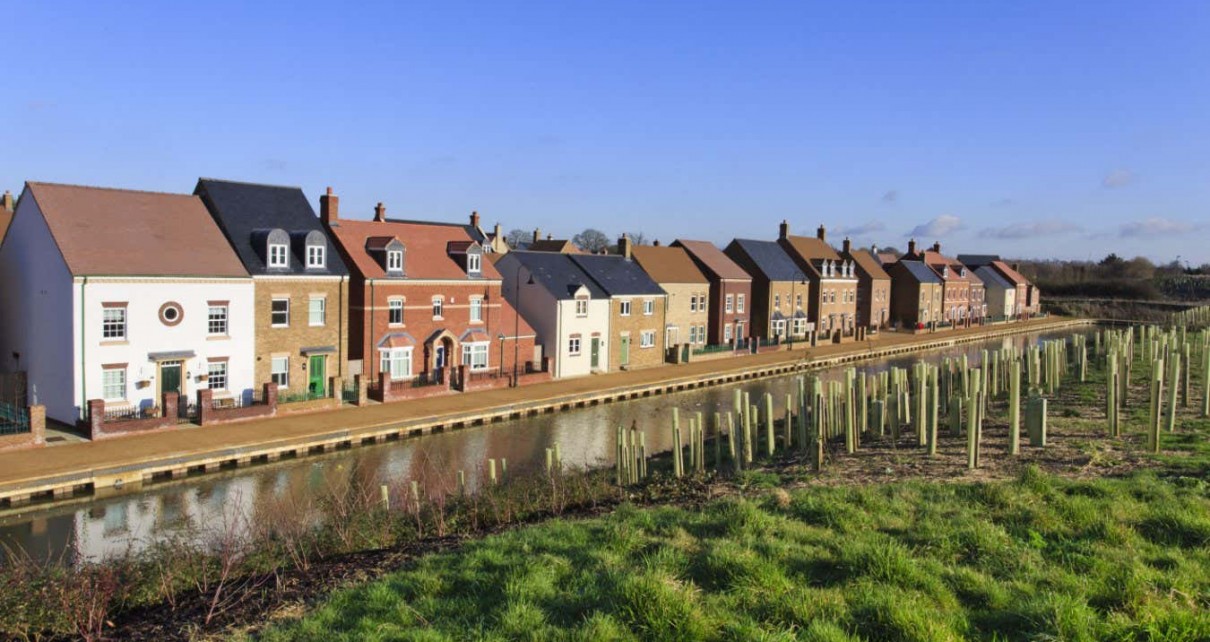[ad_1]

New homes can increase pollution in nearby waterways
Paul Smith/Alamy
Plans to allow housing developers in England and Wales to “offset” the river pollution caused by building new homes may not actually work, as they are often impractical and lack scientific evidence to support them, experts have warned.

Building new homes increases the amount of pollution that is released into waterways, particularly phosphorus and nitrogen. These nutrients are expensive to process in wastewater treatment works and so a significant amount ends up being released into local rivers, says Peter Cruddas at the University of Portsmouth, UK. This, in turn, leads to the deoxygenation of water bodies, harming both fish and plant life.
Because of this, many local government councils in England only allow new homes to be built if the developers can ensure that the nutrient pollution they produce can be mitigated, a principle called nutrient neutrality. A similar scheme operates in Wales for new homes near certain rivers, while Scotland and Northern Ireland have no such rules.
Nutrient neutrality in England has led to around 140,000 houses not being built, says James Stevens at the Home Builders Federation in the UK, according to a survey of the trade association’s members. In a push to allow more development, some councils in England and Wales have introduced nutrient credits, in which developers calculate how much nutrient pollution a new home will produce and then offset it by paying for nutrient pollution reduction schemes elsewhere.
The general idea is similar to carbon offsetting, in which people emitting greenhouse gases can “offset” this by paying for projects intended to pull carbon dioxide from the air, such as tree-planting schemes. The public body Natural England has now announced plans to roll out a nutrient credit programme nationally, allowing home builders to progress with developments that would otherwise be blocked.
Despite this, it is unclear that nutrient pollution offsetting actually works. In England, local councils have largely used nutrient credits to pay farmers to stop farming on a particular piece of land, and thus stop using fertilisers, which contain high concentrations of nitrogen.
A farmer who stops using 1 hectare of a poultry farm could produce enough nitrogen nutrient credits to allow for the development of about 30 houses, says Cruddas, although the exact number depends on where in England the farm is located.
But while farming pollution generally diffuses over a large area, the sewage from houses is piped to a treatment plant for processing and then released into rivers via a small number of pipes, creating a high concentration of nutrient pollution in a smaller area, with potentially more environmental damage.
“Generally, when you have more dilute, diffuse sources, the natural environment has a better chance to adapt to it,” says Cruddas.
Then there is the issue of whether it is possible to generate enough credits for certain nutrients to allow any houses to be built. “Far more farmland is needed to mitigate phosphorus,” says Gabriel Connor-Streich at Greenshank Environmental, a consultancy working on nutrient credits. This is because farmers generally use a lot more nitrogen than phosphorus, so the concentration across their land is lower.
It has been difficult to buy phosphorus credits in most areas in England with nutrient neutrality rules, says Connor-Streich, as farmers don’t want to give up so much land and are therefore asking for huge prices, but an increasing number of schemes is making this easier, he says. Recent reports suggest the government may look to scrap nutrient neutrality to enable more houses to be built, but Connor-Streich says changing the law to do so may prove politically difficult.
His firm is looking into other ways that farmers could mitigate nutrient pollution. One method is installing riparian buffers which constitute of trees and shrubs planted near rivers to slowdown agricultural runoff into waterbodies. But Michele Burford at Griffith University in Australia says we still don’t know how effective these buffers are in a wide range of settings. Natural England are working with Greenshank Environmental, as well as others, to reduce the uncertainties involved in using such methods to mitigate nutrient pollution, says Connor-Streich.
Another problem is that farmers who are being paid for nutrient credits typically sign up to agreements lasting around 100 years, based on how they use nutrients today. “But we’ve been reducing the amount of nutrients we put on farmland for a long time,” says Cruddas. “In 10 years, we may have become even more efficient and so that same piece of land won’t actually be offsetting an equal amount of pollution produced by the new houses built using nutrient credits.”
Simon Kennedy at Partnership for South Hampshire, who has led the nutrient credits scheme in Southampton, UK, says he believes the scheme has potential for success in England, but ultimately nutrient credits aren’t about improving rivers. “This scheme does not solve the bigger problem about the decline of these sites,” he says. “It’s about ensuring they don’t get worse.”
“Nutrient mitigation aims to reduce pressure on our rivers while supporting the building of the sustainable homes we need,” says Mike Burke at Natural England. “Our advice is based on a robust and rapidly growing evidence base, and the focus is on developing the practical techniques that can be most effective at cleaning up our rivers.”
Cruddas says he fears that the scaling up of the nutrient credit scheme could have inadvertent consequences. “We need more houses in this country, but my biggest concern is that it’s been taken up because it’s the easiest on paper to do the numbers,” he says.
“I’m worried that we’ll become over-reliant on it to the point that perhaps the numbers are not going to balance in the right way,” he says.
Article amended on 28 July 2023
We have clarified Gabriel Connor-Streich’s views on phosphorus credits
Topics:
[ad_2]
Source link




